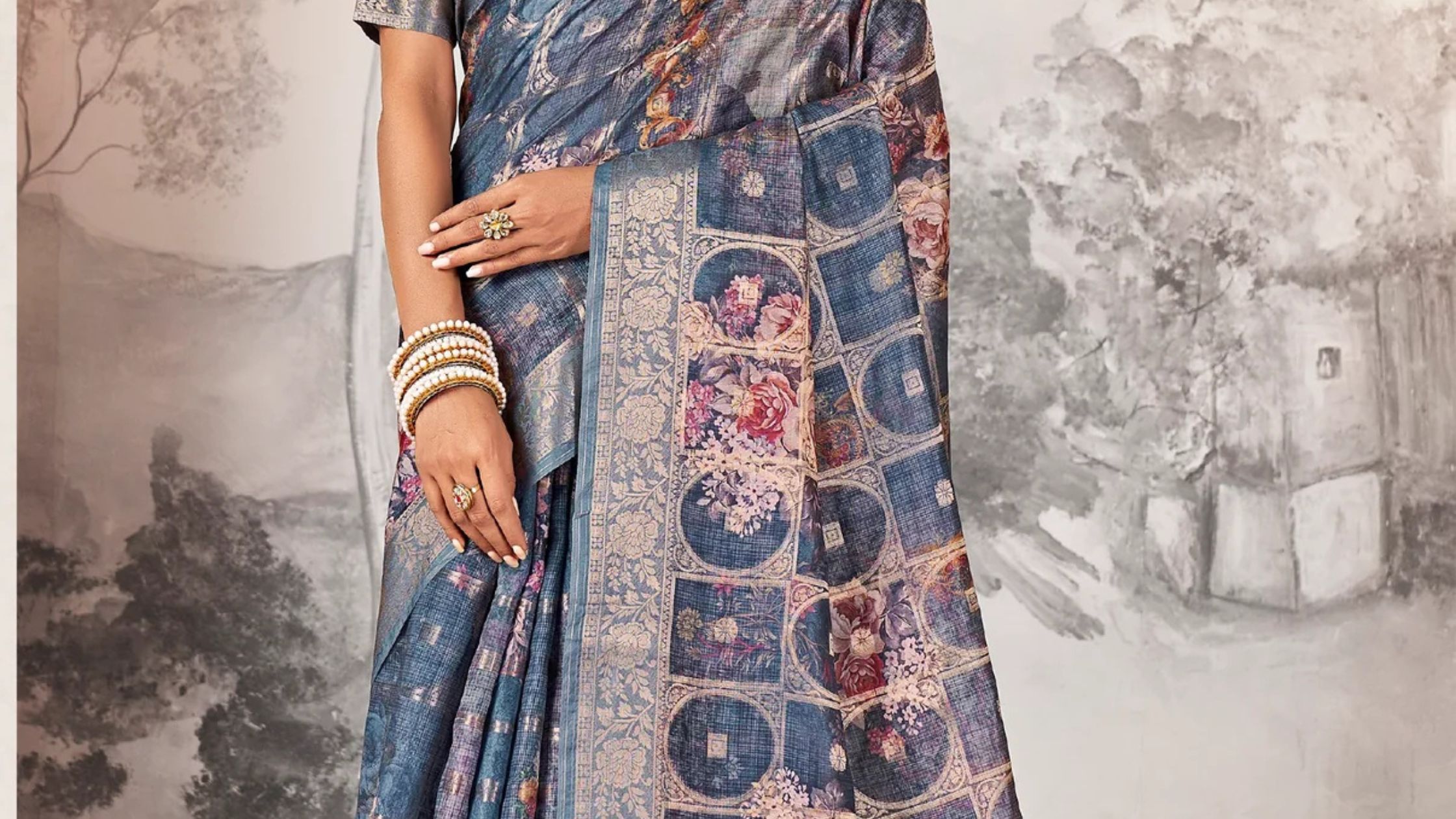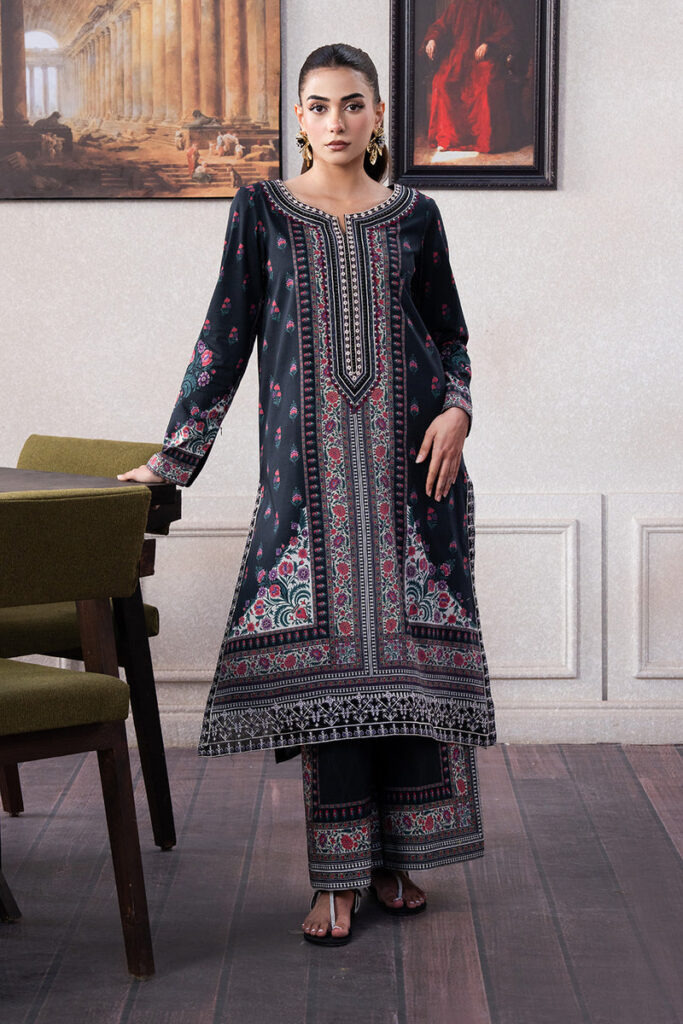India is home to some of the world’s most exquisite sarees, and two of the most coveted styles are the Banarasi saree and the Kanjivaram saree. Both are synonymous with elegance, luxury, and tradition, making them a must-have for weddings, festivities, and special occasions.
But how do you decide which one is the right choice for you? In this guide, we’ll compare Banarasi and Kanjivaram sarees based on their history, fabric, weaving technique, design patterns, and suitability for different occasions.
1. Origin and Heritage
Banarasi Saree: The Pride of Varanasi
The Banarasi saree originates from Varanasi (Banaras), Uttar Pradesh, and has been a symbol of opulence since the Mughal era. These sarees were once exclusively woven with real gold and silver threads for royalty. Today, they are still known for their fine silk fabric and intricate zari work.
Kanjivaram Saree: The Legacy of Tamil Nadu
The Kanjivaram saree hails from Kanchipuram, Tamil Nadu, and is deeply rooted in South Indian traditions. It is believed that the weavers of Kanchipuram were inspired by the architecture of South Indian temples, incorporating intricate motifs and temple borders into their designs.
???? Which One Wins?
Both sarees have a rich heritage, but if you want something with a Mughal touch, go for Banarasi. If you love traditional South Indian temple designs, choose Kanjivaram.
2. Fabric and Weaving Technique
Banarasi Saree: Fine Silk with Intricate Weaving
Banarasi sarees are woven using pure silk, organza, georgette, or shattir. The weaving process involves gold and silver brocade (zari), which gives the saree a luxurious and heavy appearance. It takes weeks to months to craft a single saree, depending on the complexity of the design.
Kanjivaram Saree: Thick, Durable Silk with Bold Borders
Kanjivaram sarees are made from high-quality mulberry silk, making them more lustrous and durable than Banarasi sarees. The most distinguishing feature is that the body and border of the saree are woven separately and later joined together, ensuring longevity.
???? Which One Wins?
If you prefer lightweight sarees, go for Banarasi. If you want a heavier, more structured saree that lasts for generations, choose Kanjivaram.
3. Design and Motifs
Banarasi Saree: Persian-Inspired Floral and Mughal Motifs
Banarasi sarees are known for their intricate floral patterns (jaal work), Mughal-inspired motifs, and artistic brocade work. You’ll often find peacocks, paisleys, vines, and intricate foliage designs in gold or silver zari.
Kanjivaram Saree: Temple Borders and Mythological Motifs
Kanjivaram sarees feature bold temple borders, checks, stripes, and motifs inspired by South Indian temples, elephants, and chariots. The contrasting color combinations give them a grand and eye-catching appeal.
???? Which One Wins?
For delicate floral work and Mughal elegance, choose Banarasi. For bold temple-inspired motifs and grand South Indian aesthetics, go for Kanjivaram.
4. Color Palette and Appeal
Banarasi Saree: Rich, Subtle Hues with Metallic Shine
Banarasi sarees often come in deep jewel tones like red, maroon, emerald green, and royal blue, with a metallic sheen due to the zari work. Pastel shades with silver zari are also popular for modern brides.
Kanjivaram Saree: Contrasting Borders and Vibrant Colors
Kanjivaram sarees are known for their bold, contrasting color combinations—such as pink with gold, green with red, or blue with orange. These sarees have a distinct matte finish compared to the metallic sheen of Banarasi sarees.
???? Which One Wins?
If you love rich colors with a metallic finish, go for Banarasi. If you prefer vibrant color-blocked sarees, choose Kanjivaram.
5. Occasions to Wear
Banarasi Saree: Perfect for Weddings and Festivities
Banarasi sarees are popular among North Indian brides and are often worn for weddings, engagements, and festive celebrations. Their rich embroidery and intricate details make them ideal for grand occasions.
Kanjivaram Saree: Ideal for South Indian Weddings and Traditional Ceremonies
Kanjivaram sarees are a staple for South Indian brides and are often worn for temple visits, poojas, and special cultural celebrations. They symbolize tradition and heritage.
???? Which One Wins?
For North Indian weddings, Banarasi is the go-to choice. For South Indian weddings, Kanjivaram is unbeatable.
6. Pricing and Investment Value
Banarasi Saree: Luxurious Yet Affordable Options
While pure Banarasi sarees can be expensive, semi-silk and blended versions are available at lower price points, making them more accessible. A pure silk Banarasi saree can range from ₹10,000 to ₹2,00,000, depending on craftsmanship.
Kanjivaram Saree: Premium and Long-Lasting
A pure Kanjivaram saree is an heirloom piece that can last for generations if maintained well. Due to its rich silk fabric and intricate weaving, prices start from ₹15,000 and can go up to ₹5,00,000 for premium varieties.
???? Which One Wins?
If you’re looking for a budget-friendly luxurious saree, Banarasi is a good option. If you want a long-term investment piece, go for Kanjivaram.
Final Verdict: Which Saree Should You Choose?
| Feature | Banarasi Saree | Kanjivaram Saree |
|---|---|---|
| Origin | Varanasi, Uttar Pradesh | Kanchipuram, Tamil Nadu |
| Fabric | Fine silk, georgette, organza | Thick mulberry silk |
| Weaving Style | Brocade zari with floral motifs | Heavy silk with temple motifs |
| Weight | Lightweight | Heavier and structured |
| Best For | North Indian weddings, festive wear | South Indian weddings, cultural events |
| Price Range | ₹10,000 – ₹2,00,000 | ₹15,000 – ₹5,00,000 |
Final Recommendation:
- Choose Banarasi sarees if you love lightweight elegance with floral motifs.
- Choose Kanjivaram sarees if you prefer bold, structured, and vibrant sarees with temple designs.
Both sarees are timeless, regal, and worth owning. Your choice depends on your style, occasion, and budget.









